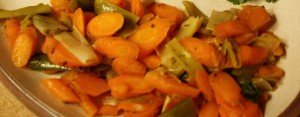Below is the article Brandon and I wrote for Renaissance Magazine’s July edition. I hope you enjoy it. I’ve blogged previously about the process of making this dish, and you can read about it HERE.
During the Renaissance, meats and fruits were in several dishes together from various cultures. Originally, the sweetness of the fruits were used to hide the acrid smells of spoiled meat and/or to remove the saltiness of preserved (salted) meat. Most common used fruits in cooking include apples, pears, citrus, apricots, figs, and dates.
The brandy soaked apricots compliment the roasted pork in a way that the fussiest eater will even enjoy this dish. This dish is one of the simplest I have to offer. In my opinion, family time should not be spent, working in a hot kitchen, but spending time with those you love.
Apricot Brandy Stuffed Pork Roast
Ingredients
3 lbs pork roast, boneless
2 cups dried apricots
2 cups brandy
2 cups water
3 tbsp butter
Begin this recipe by soaking the apricots in brandy and water for an hour and a half or until the apricots are noticeably plump; preheat the oven to 450 degrees. Cut open pork roast so it lies open and begin to flatten the pork by pounding it with a meat tenderizer until evenly flat (approximately 1 and a half to 1 inch thick. Soak four wooden skewers in water. Roughly chop up the reconstituted apricots and return them to the watered down brandy. Place chopped apricots in middle of the flattened pork roast, reserving the liquid, and fold over the long ends of the pork and secure them with two wooden skewers.
Fold in open ends of roast and secure with the last two wooden skewers. Place the 2 tbsp butter in a heated Dutch oven until melted and then add the stuffed pork roast. Sear the pork roast fat side up and add the reserved liquid. Place the lid of the pot and place in oven. Cook for one hour. When the roast is done, take it out of the pot and set on a cutting board covered for 5 minutes. Return the pot to a stove top and add 1 tbsp butter and begin cooking down the sauce. Remove the skewers and slice up the roast, served with the sauce.
In the photograph, the dish was served with braised leeks and carrots as a side dish. This recipe can be found on her cookbook “Renaissance Cooking II: Visiting the Silk Road” and on her website at http://www.alicethecook.com. You can find it by searching for “braised leeks.”



